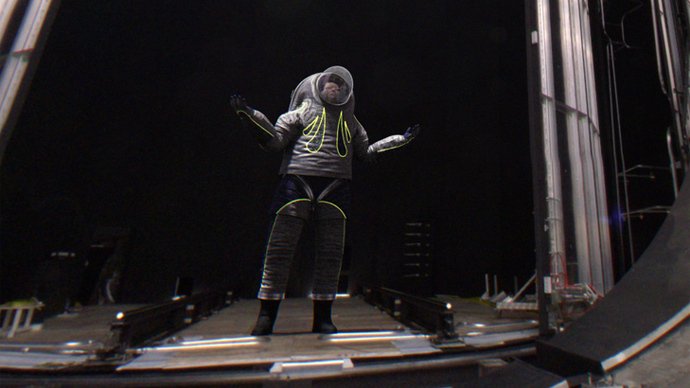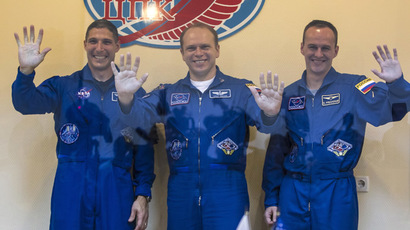NASA set to unveil latest spacesuit design - with public's help

Anticipating its astronauts will soon encounter unprecedented environs in space, NASA is set to unveil the new Z-2 spacesuit for deep-space exploration. Public voting on three Z-2 prototypes closes Tuesday evening.
NASA says all three options for the latest Z-series spacesuit “will incorporate a number of technology advances to shorten preparation time, improve safety and boost astronaut capabilities during spacewalks and surface activities.”
The suits – “Biomimicry,”“Technology,” and “Trends in Society” – largely share functions but are distinct in aesthetic design.
No matter which design is chosen by the public – the online poll is open until 11:59pm EDT on Tuesday –the Z-2 will include many advancements in spacesuit capability:
“First surface-specific planetary mobility suit to be tested in full vacuum; first use of 3D human laser scans and 3D-printed hardware for suit development and sizing; most advanced use of impact resistant composite structures on a suit upper and lower torso system; first integration of the suit-port concept with a hard upper torso suit structure; most conformal and re-sizeable hard upper torso suit built to date.”
NASA is expected to complete the Z-2 suit by November 2014.
In the meantime, the space agency says the Z-2 suit has a significant test campaign ahead of it.
“We will be conducting multiple vacuum chamber tests, including one series at full vacuum, mimicking the lack of atmosphere found in outer space,” NASA says. “The suit will be tested at the Neutral Buoyancy Lab (NBL), the huge indoor pool NASA uses to train every astronaut in the technique of spacewalking. Further testing at a rocky Martian surface analog site at the Johnson Space Center along with other settings will help us evaluate mobility, comfort and performance of the suit.”
The Z-2 will not be used in space flights just yet, as the Z-series is “still in the prototype or non-flight phase.”
“The cover layer of a non-flight suit, which is used for ground-based testing, serves as abrasion/snag protection, a cover for technical details, and to a lesser extent, aesthetics,” NASA reports. “For a flight suit which is actually used for a spacewalk, the cover layer performs many other important functions such as micrometeorite, thermal and radiation protection.”
The Z-2 will take the place of the Z-1 suit. The differences between the two include a hard composite upper torso on the Z-2, for "long-term durability that a planetary [spacesuit] will require,” as compared to Z-1's soft upper torso. The Z-2's shoulder and hip designs offer increased mobility, its boots are more advanced, and its components are "compatible with a full vacuum environment,” according to NASA.

















